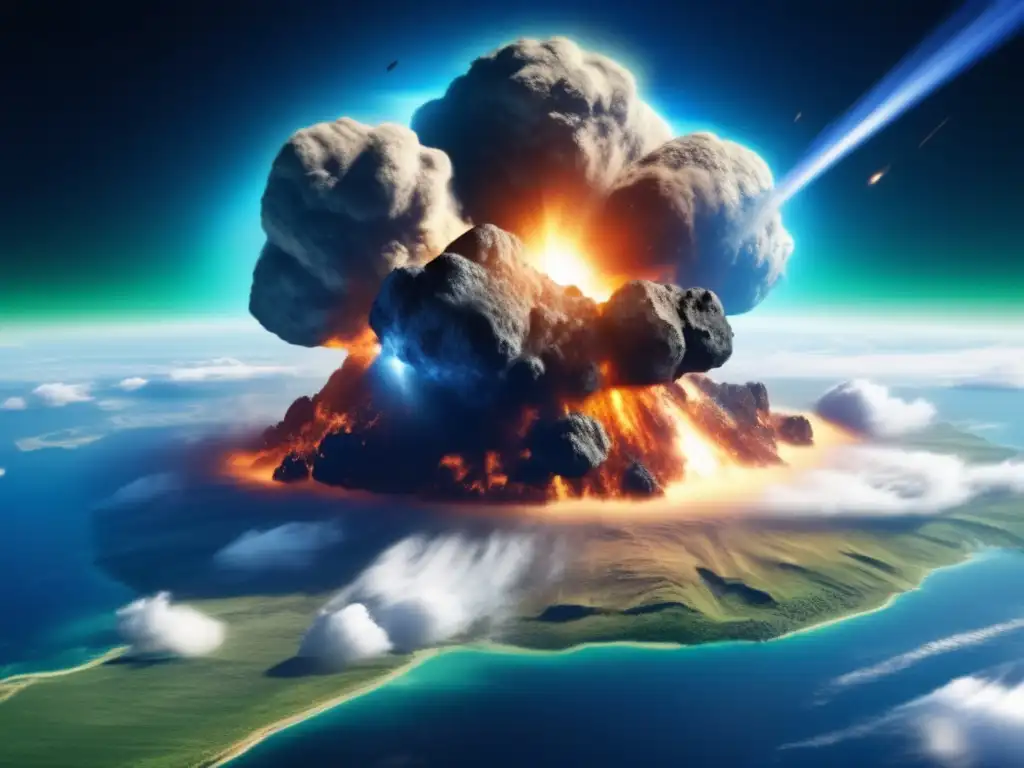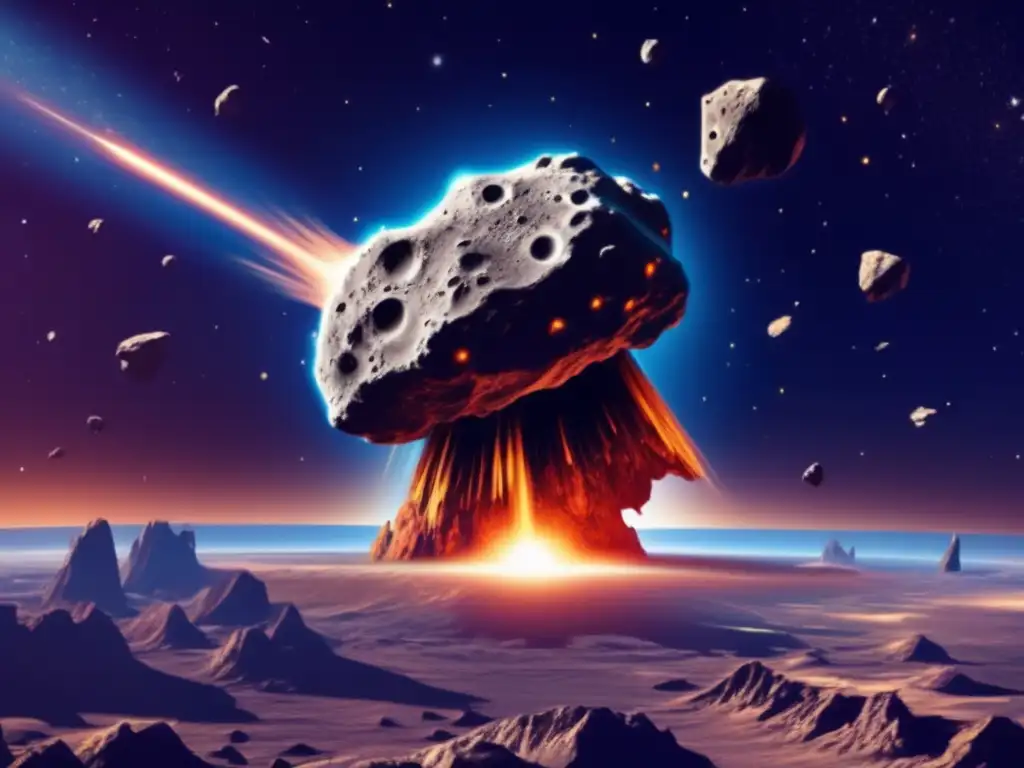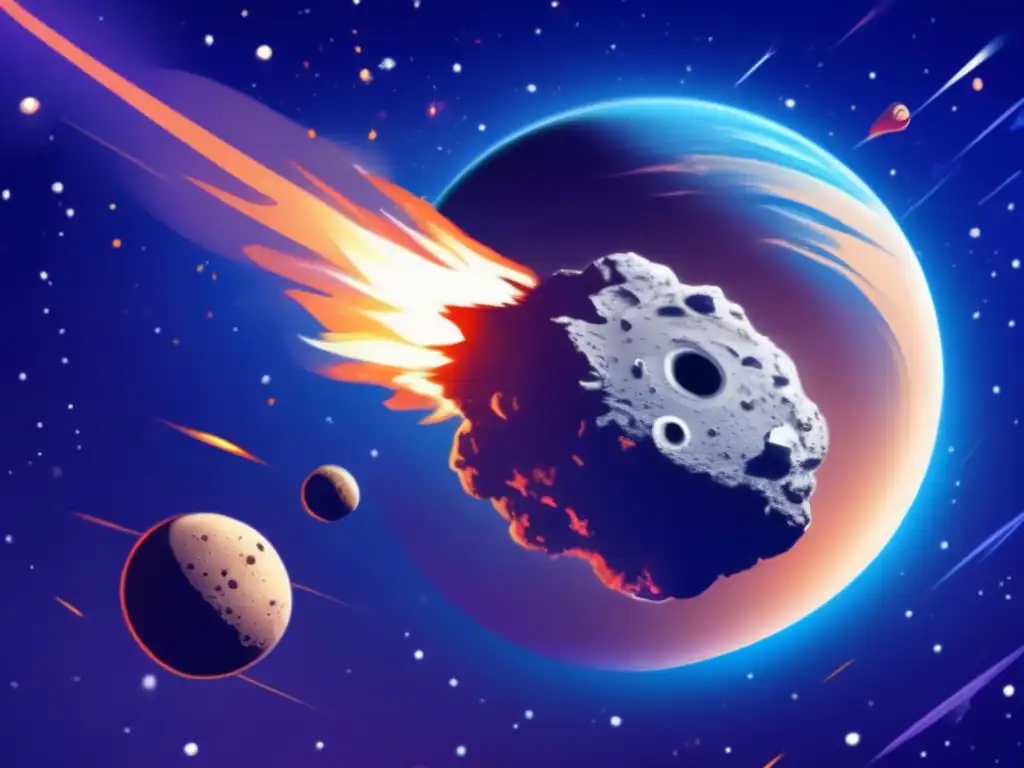Cosmic Showers: The Frequency Of Asteroid Strikes

Introduction
Asteroids are massive rock fragments orbiting the Sun that originated from the asteroid belt between Mars and Jupiter. Over time, some asteroids can collide with other celestial bodies, including planets like Earth. Due to their size and composition, these collisions can have catastrophic consequences, wiping out entire species and drastically changing the planet's landscape. In this article, we will discuss the frequency of asteroid strikes and the impact they have on Earth.
How Often Do Asteroids Strike Earth?

The Chelyabinsk Meteor of 2013
On February 15, 2013, a meteor exploded over the skies of Chelyabinsk, Russia, releasing energy equivalent to 500 kilotons of TNT and injuring over 1,000 people. At an estimated size of 20 meters, the Chelyabinsk meteor was the largest object to strike Earth since the Tunguska event in 1908. However, smaller asteroid strikes happen more frequently than larger ones.
Small Asteroid Strikes
Small asteroids, such as those less than 10 meters in diameter, strike Earth around once every 10 years. These asteroids typically burn up in the atmosphere, resulting in bright fireballs or meteor showers. These events pose no threat to human life or infrastructure. However, there is always the possibility of a small asteroid striking a populated area.
Large Asteroid Strikes
Larger asteroids, such as those greater than 1km in diameter, strike Earth much less frequently. Scientists estimate that asteroids of this size strike Earth once every few million years. These impacts can cause widespread destruction and mass extinction events on a global scale.
What Happens When an Asteroid Strikes Earth?

Impact Craters
When an asteroid strikes Earth, it can create a crater on the planet's surface. The size and shape of the crater depend on the size and speed of the asteroid, as well as the nature of the soil and rock in the impact area. Large craters can have diameters of several kilometers and can remain visible for millions of years.
Environmental Effects
Asteroid impacts can also have significant environmental effects. The force of the impact can cause earthquakes, tsunamis, and volcanic eruptions. The heat generated by the impact can ignite fires and cause global wildfires, while the impact debris can block sunlight and trigger a "nuclear winter" effect. In addition, the impact can inject large amounts of carbon dioxide and other greenhouse gases into the atmosphere, contributing to climate change.
Mass Extinctions
The most catastrophic asteroid impacts can cause mass extinctions, wiping out entire species of plants and animals. The most famous example of this is the Chicxulub impact that occurred around 66 million years ago, which is believed to have caused the extinction of the dinosaurs. However, smaller asteroid impacts can also have a significant impact on the planet's flora and fauna.
What Can We Do About Asteroid Strikes?

Detection and Tracking
One of the most effective ways to prevent asteroid strikes is through early detection and tracking. The NASA-funded Catalina Sky Survey and Pan-STARRS project are two examples of programs that survey the skies for potentially hazardous asteroids. Once an asteroid is detected, its orbit can be calculated, and scientists can determine if it poses a threat to Earth.
Deflection
If an asteroid is found to be on a collision course with Earth, there are several ways it can be deflected. One option is to use a spacecraft to collide with the asteroid, altering its trajectory. Another option is to use a "gravity tractor" to slowly pull the asteroid off course using its gravitational attraction. However, these methods require early detection and planning, as they may take several years or even decades to be effective.
Planetary Defense
NASA's Planetary Defense Coordination Office (PDCO) is responsible for coordinating efforts related to planetary defense, including asteroid detection, tracking, and deflection. In addition, private companies such as SpaceX and Blue Origin have expressed interest in developing capabilities to deflect asteroids.
Frequently Asked Questions

-
How often do asteroids strike Earth?
Small asteroids strike Earth around once every 10 years, while larger ones strike once every few million years.
-
What happens when an asteroid strikes Earth?
Asteroid impacts can create impact craters, cause environmental effects, and trigger mass extinctions.
-
Can we prevent asteroid strikes?
Asteroid strikes can be prevented through early detection and tracking, deflection, and planetary defense strategies.
-
How does NASA track asteroids?
NASA uses programs such as the Catalina Sky Survey and Pan-STARRS to survey the skies for potentially hazardous asteroids.
-
What is the role of the Planetary Defense Coordination Office?
The Planetary Defense Coordination Office is responsible for coordinating efforts related to asteroid detection, tracking, and deflection.
Conclusion
Asteroid strikes pose a significant threat to life on Earth. While small asteroid strikes are relatively common and harmless, larger ones can cause catastrophic damage. Early detection and tracking, as well as deflection and planetary defense strategies, are key to preventing these events from happening. As citizens of planet Earth, it is our responsibility to support efforts to protect our planet from cosmic showers.
What are your thoughts on asteroid strikes? Share your comments and feedback below. We encourage you to subscribe to Asteroid Realm for more fascinating articles on the world of asteroids.
Additional Resources

 Impact Or Bust: What Happens When An Asteroid Misses?
Impact Or Bust: What Happens When An Asteroid Misses? Asteroids And Ice Ages: Any Connection?
Asteroids And Ice Ages: Any Connection? Impacts And Inhabitants: How Asteroid Strikes Affect Wildlife
Impacts And Inhabitants: How Asteroid Strikes Affect WildlifeIf you want to discover more articles similar to Cosmic Showers: The Frequency Of Asteroid Strikes, you can visit the Asteroid Impacts category.
Leave a Reply

Articulos relacionados: